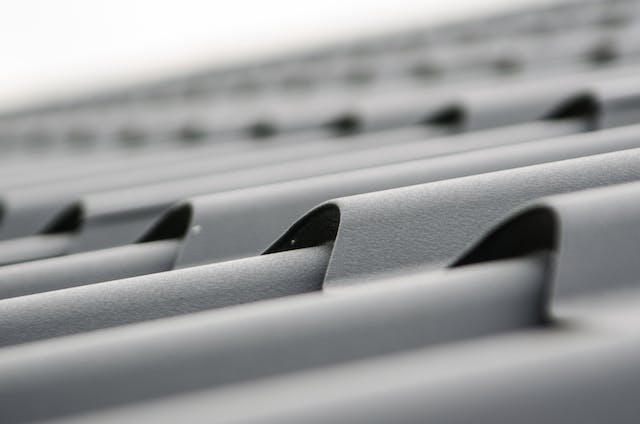There are many signs of a roof leak, including brown stains on your ceiling or droplets falling from a leaky spot. You may also hear hissing sounds from a leaky hole in your home.
One of the most common places to find a leak is where a pipe vents through your roof. A roofer will install a neoprene pipe boot to protect the flange and stop moisture from following the line into your home.
Damaged Flashing
The peaks and valleys of your roof add to its architectural beauty but can also create potential entry points for water leaks. If your roof has a valley, it’s essential that the area is sealed correctly and that the flashing around it is not damaged or deteriorating. Water can travel through these areas and cause damage far away from the source of the leak.
Flashing is narrow strips of metal that go over roof joints and seams to protect against leaks. It’s also installed around chimneys, dormers, and skylights to prevent moisture from seeping into those structural aspects of the home. Flashing can become damaged over time due to age-related wear and tear, exposure to fluctuating temperatures, or improper installation by a roofing contractor.
Damaged Gutters
A gutter’s job is to channel water from the roof into downspouts and away from the house. Clogged or damaged drains can lead to a roof leak as they allow water to pool where it shouldn’t.
Overgrown trees can also cause issues. They may hang over the roof, allowing branches to crack or chip shingles, and they can collect debris and leaves that clog the gutters.
Before contacting professionals, try to track down the source of the leak yourself. Using a garden hose, soak the roof area where you suspect the leak is located. Move the hose around, looking for a drip or musty smell. If you find the source, contact professionals to fix it. In the meantime, use buckets or containers to catch the leaking water and avoid more damage.
Loose Fasteners
Bolts and other threaded fasteners are used in various applications across multiple industries. Unfortunately, they are also susceptible to loosening.
Often, this is the result of a need for more preload. During assembly, the bolt must be suitably tightened to transfer the applied torque through the fastener to act as a clamping force.
This is why it’s critical to follow the recommended torque specifications. If a bolt is overtightened, it may become damaged and lose its ability to transmit load.
It’s also important to consider the environment where the bolts are used. Vibration and thermal expansion can cause fasteners to loosen over time. In these cases, vibration-resistant locking nuts can be valuable for maintaining a secure connection.
Broken Shingles
Shingles are susceptible to damage from many sources as the outermost layer of your roof and the first line of defense against the elements. Whether it’s high winds, hail, or other debris that dislodges shingles or the effects of neglect, broken shingles can allow water into your home.
Over time, hot and cold temperatures can cause shingles to crack. When this occurs, moisture seeps through the shingle and into the underlayment, where it causes structural damage.
You can spot a leaking roof if you observe wet marks on the ceiling or walls. However, you may need to check your attic to pinpoint the source of the leak. If you notice a leaking area in the attic, look for signs of moisture like wood rot, black marks, or mold. In addition, professional roof repair can help you solve roof leaks.
Clogged Gutters in the Valley
In addition to causing roof leaks, clogged gutters can also cause foundation problems and basement leaks.
All debris that falls on the roof eventually washes into the gutter system. However, it’s easy for twigs, leaves, and other debris to become snagged in the gutter and create a clog or blockage.
When looking for a source of a roof leak, water stains on ceilings and the upper edges of walls are often the first clue. Colors are usually ring-shaped and discolored. They may appear near roof trusses or other penetration points like chimneys. Conducting a thorough ground-level roof inspection is essential when a homeowner spots these water stains. This includes examining the area uphill from the color and checking the roof vents and eaves.






